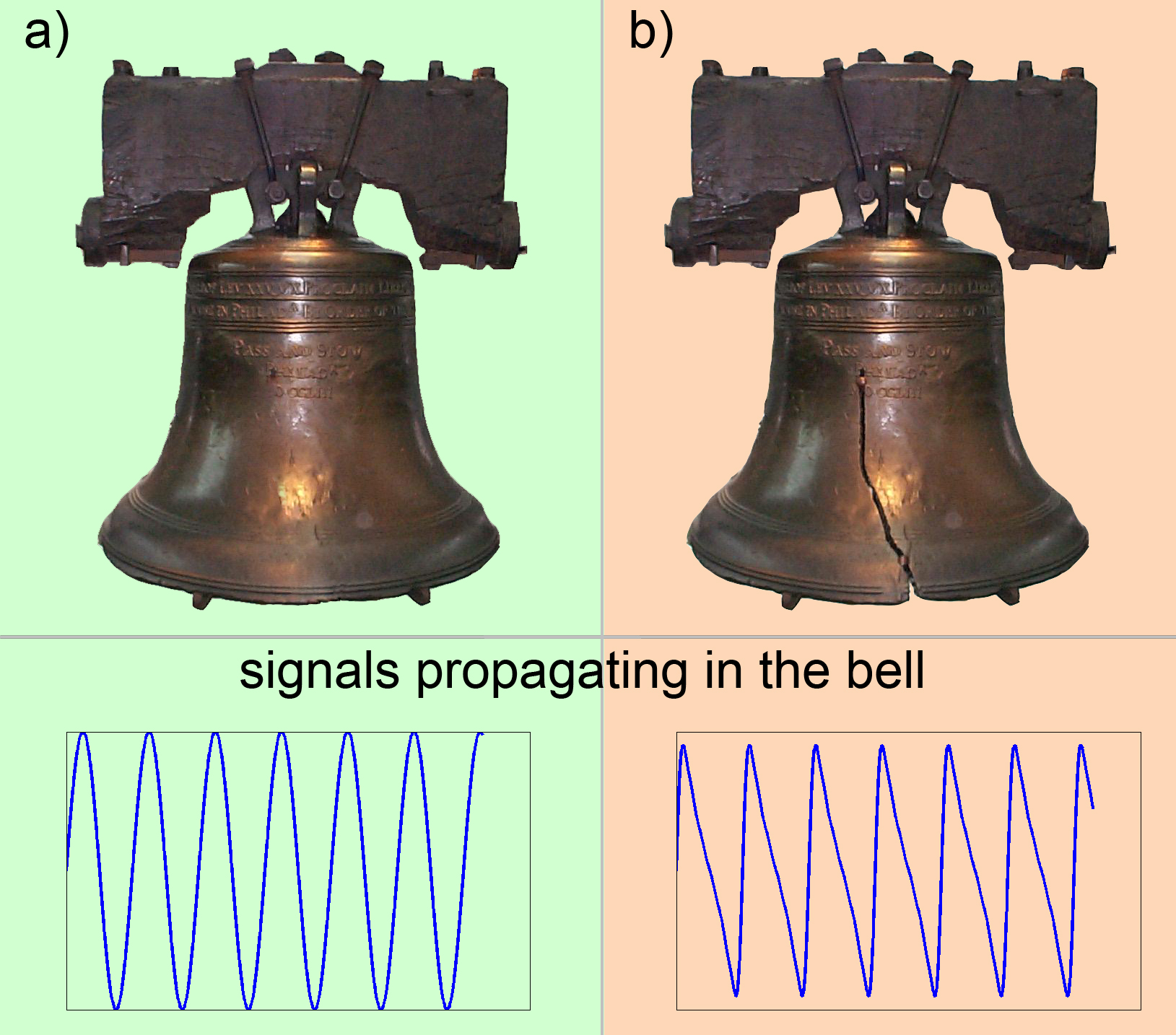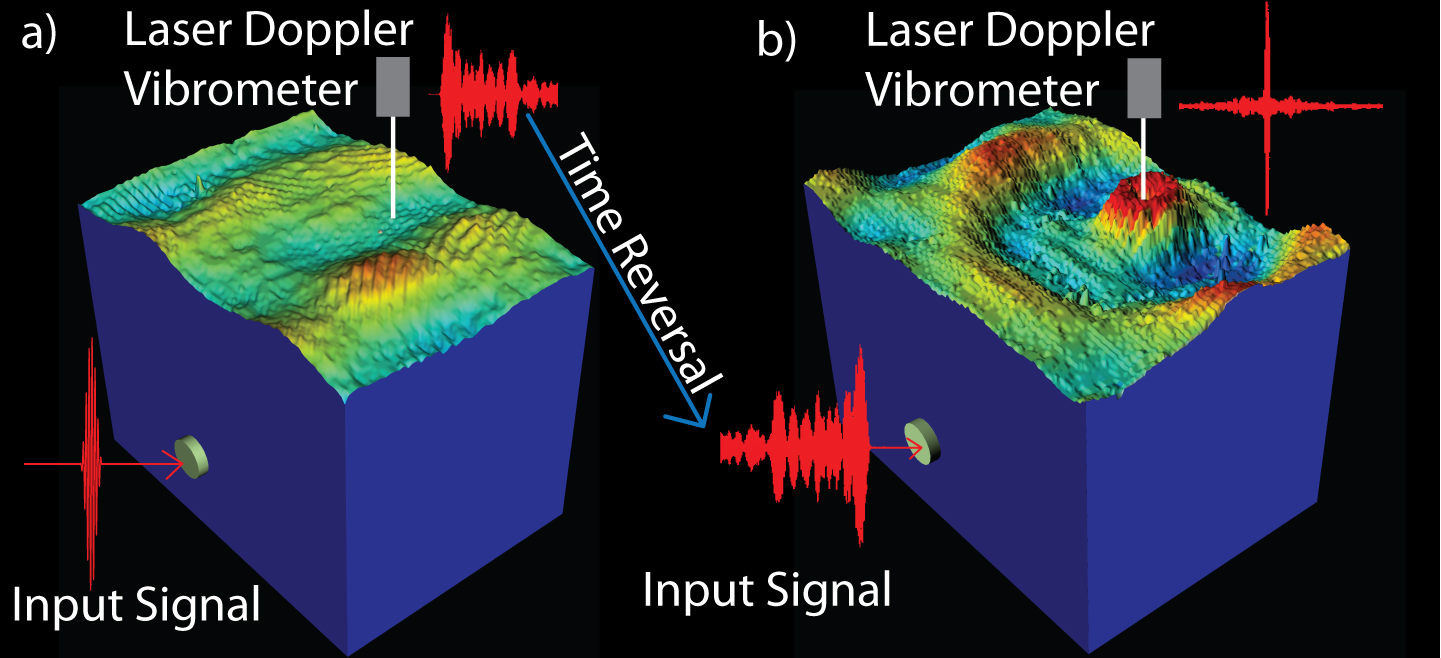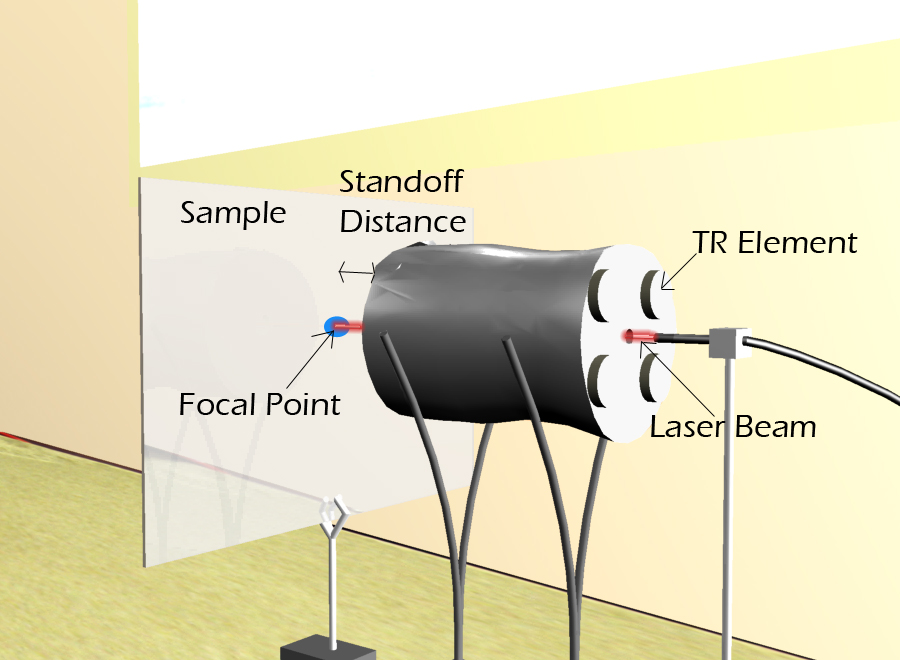
Figure 1: How sound is changed by the presence of defect. On the left an intact bell rings nicely and the wave is regular. On the right, the bell is unpleasant and the wave is distorted.
Pierre-Yves Le Bas --pylb@lanl.gov
Geophysics group EES-17
Los Alamos National Laboratory
Los Alamos, NM 87545
TJ Ulrich
Geophysics group EES-17
Los Alamos National Laboratory
Los Alamos, NM 87545
Brian E. Anderson
Geophysics group EES-17
Los Alamos National Laboratory
Los Alamos, NM 87545
Department of Physics and Astronomy
Brigham Young University
N377 Eyring Science Center
Provo, UT 84601
J. James Esplin
Department of Physics and Astronomy
Brigham Young University
N377 Eyring Science Center
Provo, UT 84601
Popular version of paper 4pEAa3
Presented Thursday afternoon, May 17, 2012
163rd ASA Meeting, Hong Kong
Non-linear acoustic methods are some of the most sensitive methods for evaluation of the integrity of solid samples. These methods were developed over the last ten years at Los Alamos National Laboratory (LANL) and with other institutes worldwide. In short, those methods rely on the distortion of a sound wave in the presence of damage (cracks or other defects). Intact materials do not distort the wave. It is the characterization of the wave shape changes that is the heart of non-linear methods (see Figure 1).

Figure 1: How sound is changed by the presence of defect. On the left an intact bell rings nicely and the wave is regular. On the right, the bell is unpleasant and the wave is distorted.
These techniques will ultimately change how maintenance and quality control are applied in industry and will be a major leap forward in our ability to measure small amounts of damage in a material. If this goal can be reached, early damage can be detected and this will reduce the need to rely on statistics to decide when to replace critical parts. The main issue preventing the spread of these techniques is that they require high amplitude waves for the distortion to be detected (high amplitudes relative to those used in standard methods, but still modest enough to not damage the sample). To reach such amplitudes, sound sources need to be bonded to test samples. Non-contact sound sources exist, but they are too weak. A non-contact source capable of producing high amplitude waves would solve this problem and open up new frontiers for non-linear techniques. We approach a solution here through the use of a method called time reversal. Time reversal allows focusing of wave energy in time and space. Our research is based on the concept of applying time reversal to create a high amplitude non-contact sound source. The strength of time reversal is its simplicity (see Figure 2). You just need to record the sound at the point where you want to focus energy (which can be done without contact using with a laser), then flip those signals around and broadcast the flipped signals and the wave will focus by itself.

Figure 2: the principle of time reversal: to focus at a given point, just record the signal arriving at that point, flip it in time and send it back.
One of the great things about time reversal is that it works even better when the paths that the sound travels are complex. Our new source takes advantage of this by doing the time reversal process in the air inside a cavity (see Figure 3 and movie).

Figure 3 prototype: the time reversal process is done inside a cavity. The signal on the target is measured without contact using a laser..
Using such a system, we were able to generate sound waves in a sample by applying time reversal and without physically touching the sample. The results are extremely encouraging, achieving almost 10 times the amplitude of a current air coupled ultrasound transducer, and lead us to believe that the idea can be developed for further non-linear applications. LANL is currently working to develop a complete system comprised of hardware and software that will generate the desired signal in a sample at amplitudes much higher (10 - 100 times) than any non-contact transducer currently available. Success in development of the time reversal non-contact source will lead to broad application of non-linear acoustics. Of particular interest are applications to objects that cannot be touched or are too small to have transducers attached.
This work is funded by the US department of Energy via the Los Alamos National Laboratory LDRD program.